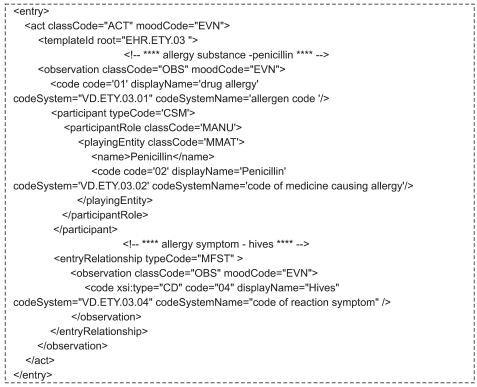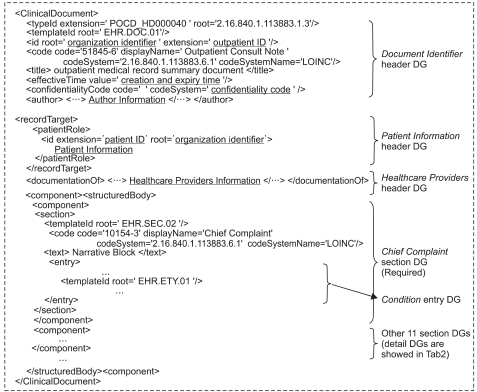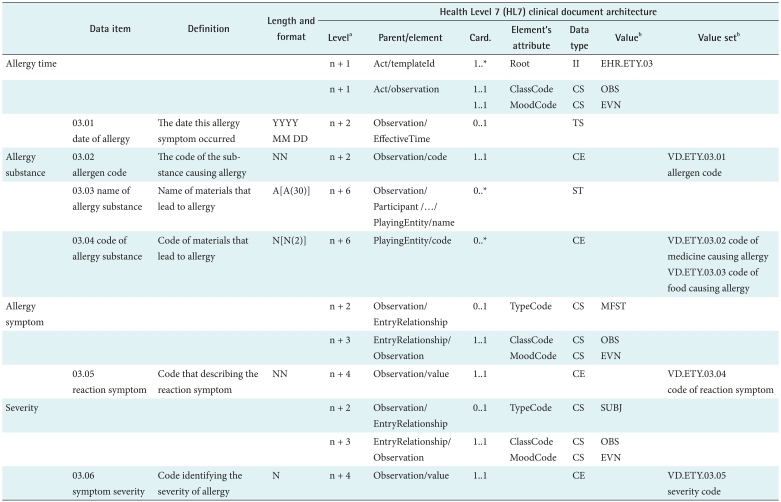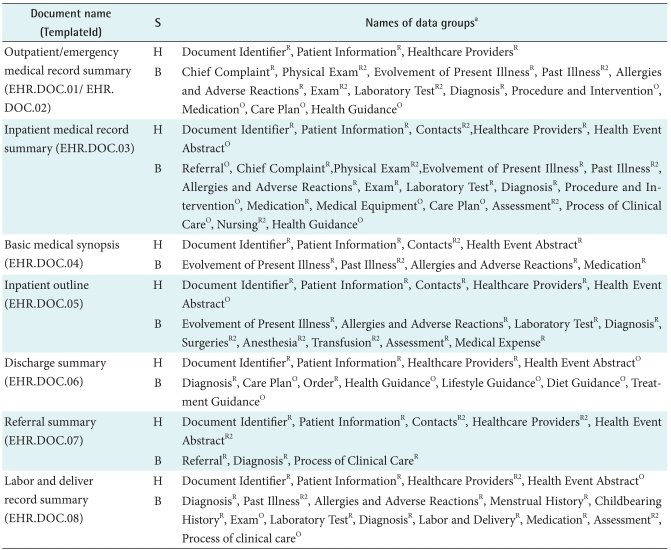 |
 |
- Search
| Healthc Inform Res > Volume 17(4); 2011 > Article |
Abstract
Objectives
Methods
Results
Conclusions
Acknowledgements
References
Figure 1

Figure 2

Figure 3

Figure 4

Table 1

an represents the level of class, "plus 1" means the level increases by 1. bData groups (DGs) and value sets were all assigned identifiers. A DG was assigned with 8 or 10 letters. The first 3 letters was "EHR" and the 4th, 5th, and 6th was the DG's type containing three-letter (HRD, SEC or ETY). The last 2 or 4 letters were the sequence number. A value set was assigned an identifier with 9 letters. The first 2 letters are the "VD" and the 3rd -7th are the DG's type and its sequence number. The last 2 letters are the sequence number of this value set.
Table 2

S: structure, H: header; B: body, DGs: data groups, EHR: Electronic Health Record, HL: Health Level.
aEach DG was given the attribute of optionality (R, R2, or O). In data exchange, R means the contents of DGs must be sent R2 means if the content is known, it must be sent, and if it is not known, it need not be sent O means the DGs' content may be sent selectively according to the actual medical requirements.
- TOOLS
-
METRICS

-
- 2 Crossref
- 5,127 View
- 39 Download
- Related articles in Healthc Inform Res
-
Development of a Standardized Curriculum for Nursing Informatics in Korea2022 October;28(4)
The Development of Medical Record Items: a User-centered, Bottom-up Approach2012 March;18(1)





